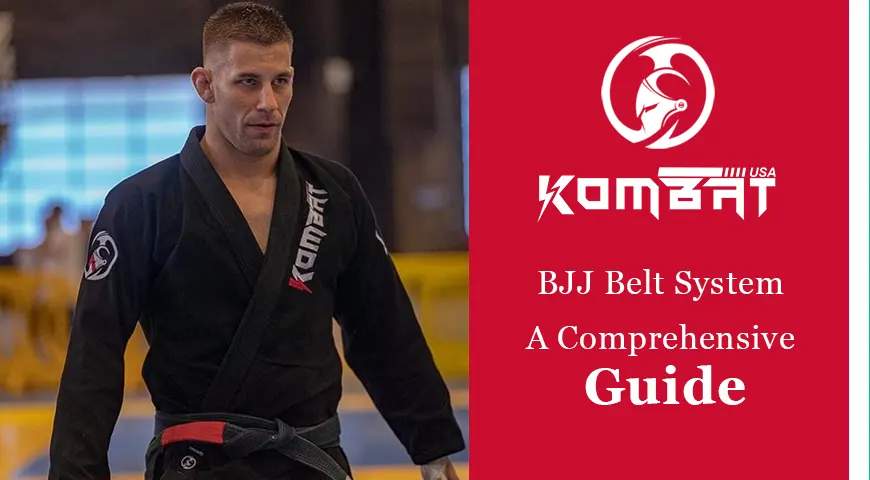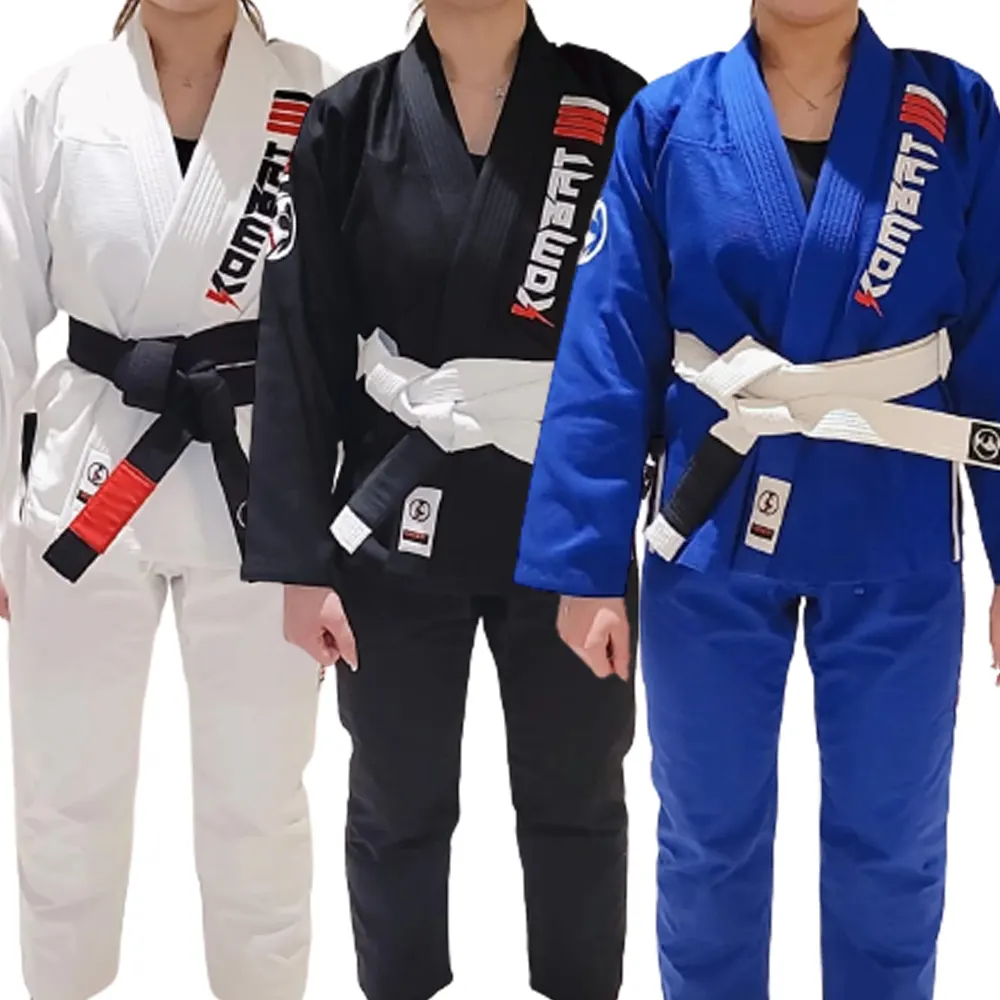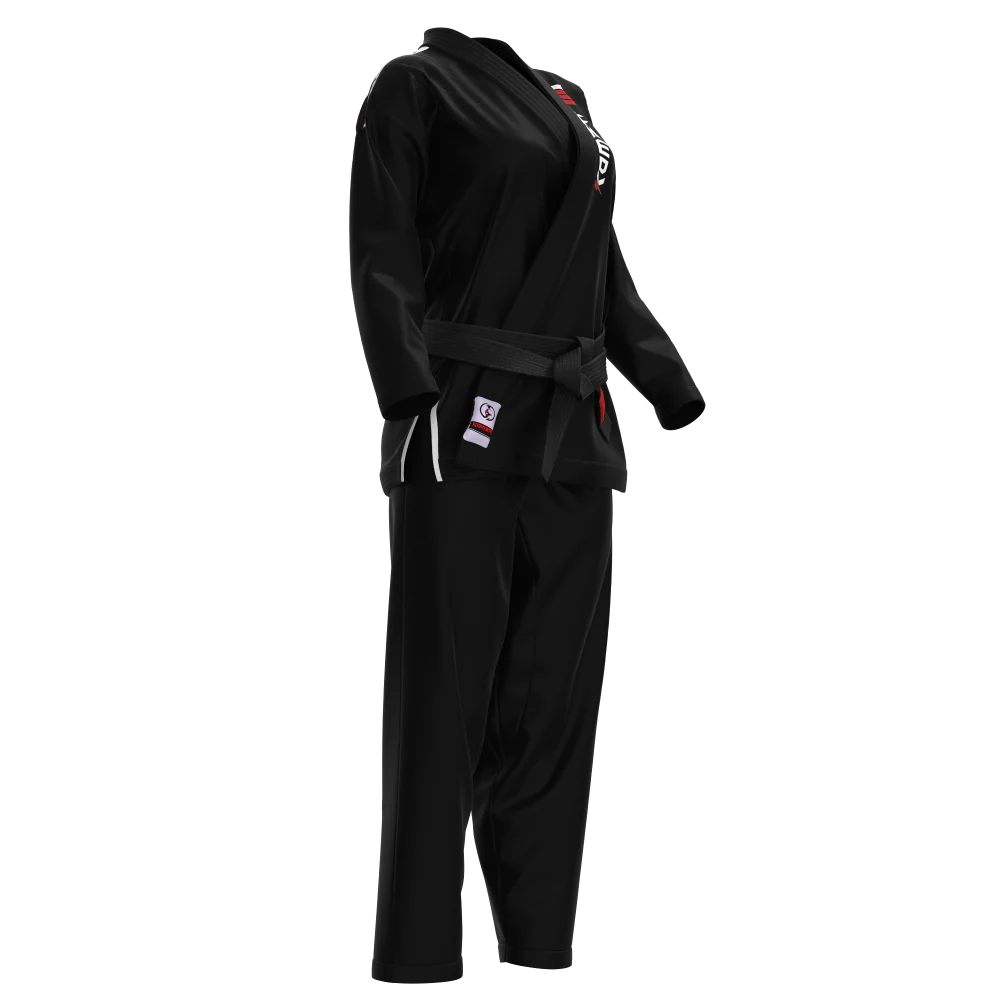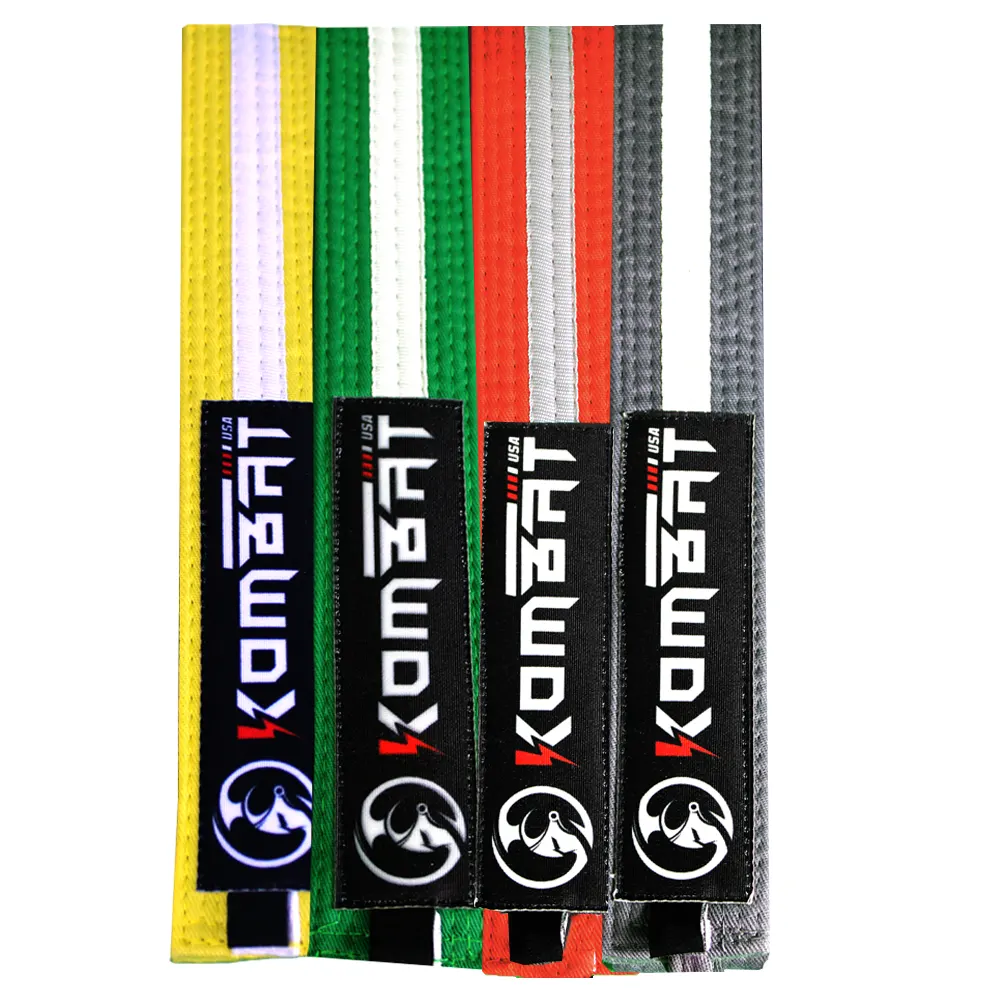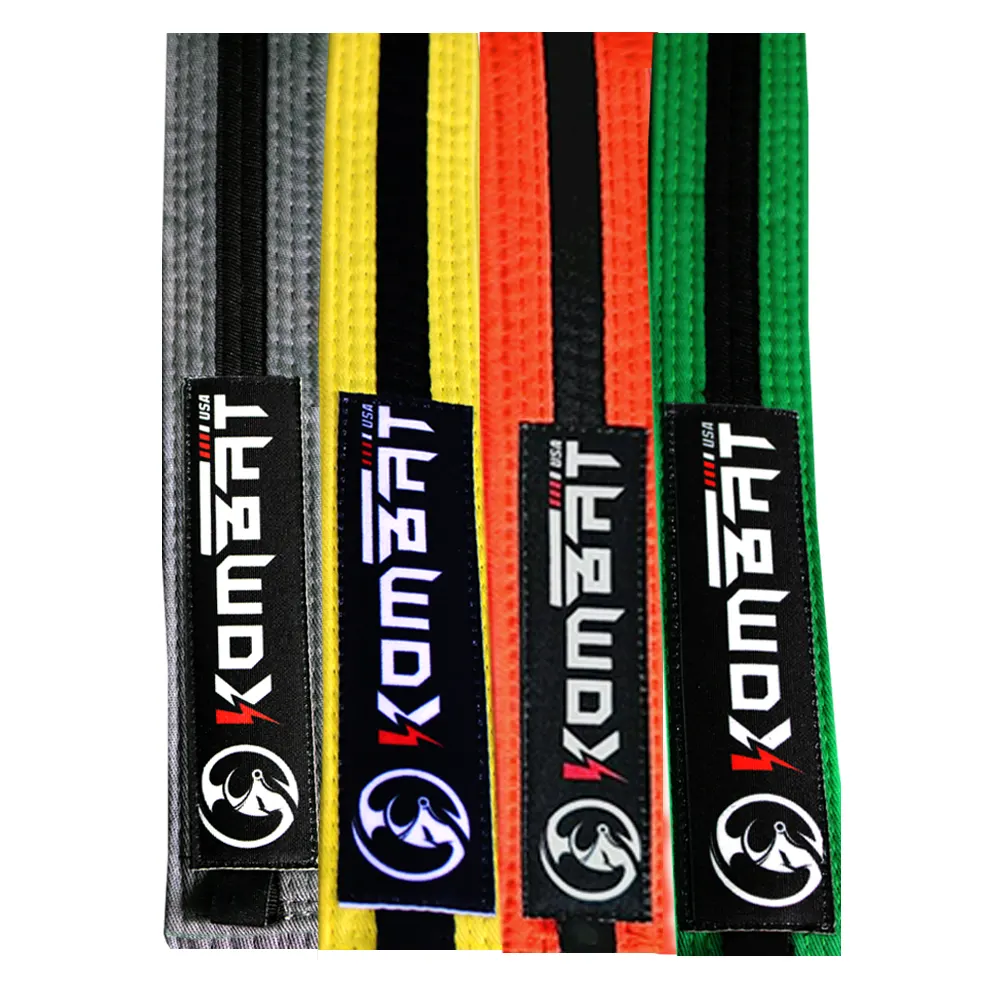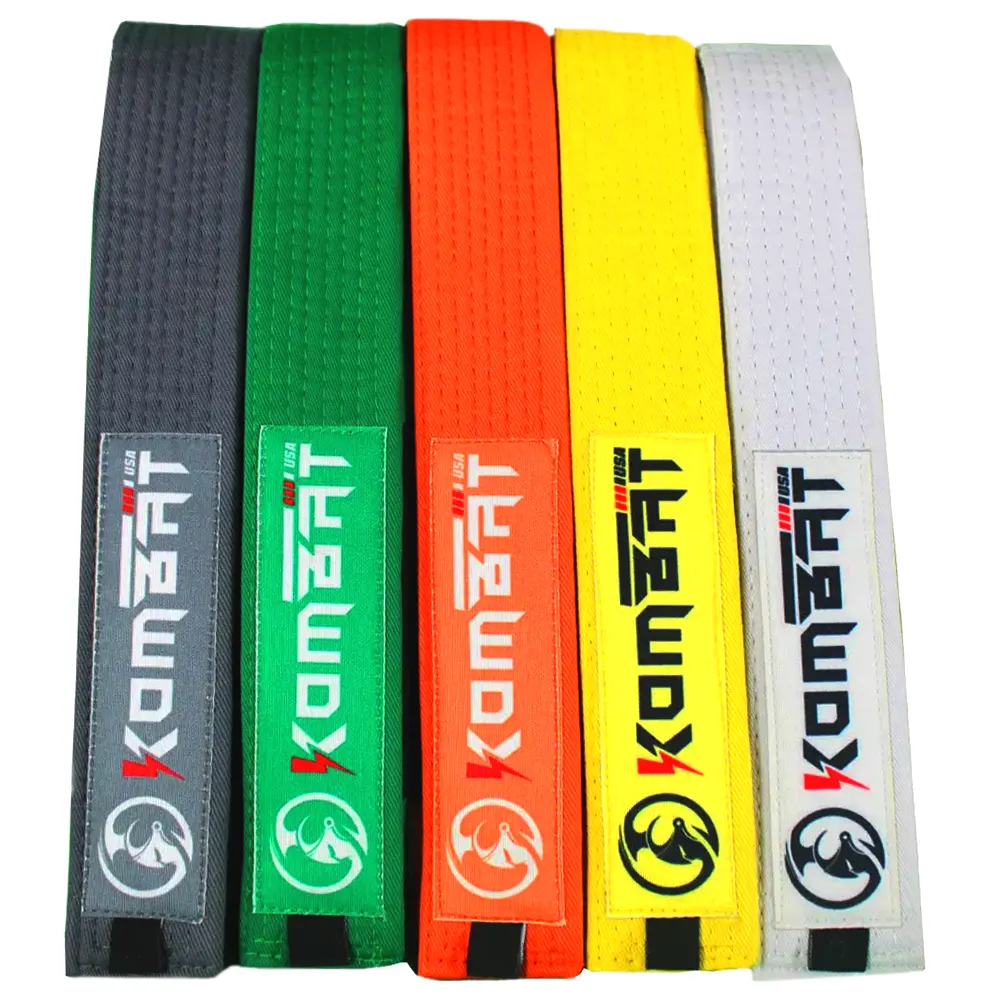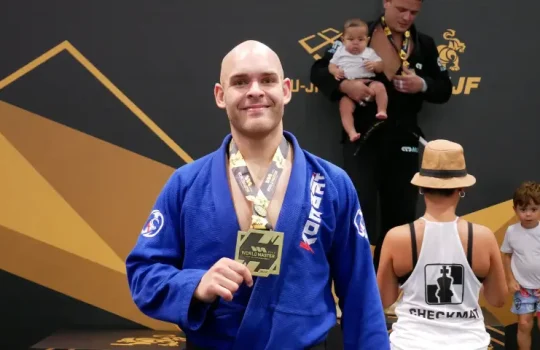There is always a motivation behind every career. To achieve their goals and targets, everyone struggles hard. When we talk about Brazilian Jiu Jitsu, its BJJ belt system is the key motivation for every player. The best method to maintain passion and dedication in a given activity is to make progress. The belt system in BJJ represents their ranks and is a source of positive motivation to keep the morale high during jiu jitsu competition and training.
The history of this antiquated fighting technique is inspiring. People’s hearts still have the roots of Brazilian Jiu Jitsu.
The masters of BJJ have developed a method for observing a Jiu Jitsu practitioner’s experience, abilities, and development. The Brazilian Jiu-Jitsu belt system is an important way to gauge your degree of development and assign colors to it.
Several distinct colors in jiu jitsu belt ranks represent the practitioner’s expertise and experience in Jiu-Jitsu.
Progress Journey From White Belt To Black Belt
The journey from white belt to black belt and beyond belts is an important aspect of Brazilian Jiu-Jitsu and a tool to gauge how well practitioners are progressing in martial art.
For BJJ athletes worldwide, there are currently eight standardized BJJ belt levels.
Lightening PRO V1.0
Thunder COMP PRO V1.0
Fearless COMP V1.0
Adult BJJ 8 Belt Levels
- White Belt
- Blue Belt
- Purple Belt
- Brown Belt
- Black Belt
- 7th Degree Black Belt, Red and Black Belt
- The 8th-degree black belt, the Red and White Belt
- Red Belt (the ninth and tenth degrees of the black belt)
However, among Jiu-Jitsu practitioners, earning a black belt is the ultimate objective. Before earning a black belt BJJ, the other belts serve as short-term objectives or as a ladder’s rungs.
Becoming a black belt takes a lot of time, which probably takes up a significant portion of your life.
In any case, most of them—aside from a lot of time, discipline, dedication, and hard work—are essential to developing into a black belt champion.
Continue reading to learn how many belts there are, how Brazilian Jiu-Jitsu’s belt system works, and what you need to accomplish to get the next belt.
What Are The Requirements For Each Brazilian Jiu-Jitsu Belt?
The IBJJF adult BJJ belt system, which BJJ specialists have assembled, is presented after the following material. Other belt systems, such as the Jiu-Jitsu Global Federation (JJGF), exist besides the IBJJF.
The International Brazilian Jiu-Jitsu Federation (IBJJF) is recognized as a legitimate organization with valid BJJ belt standards. Brazilian jiu-jitsu has five basic belt colors: white, blue, purple, brown, and black. There are belts below the black belt that typically require four degrees.
The above belts hold the first six degrees up to the black belt. After the black belt, three other belts stand for the 7th, 8th, and 9th degrees. The red belt, who ends up being the last, takes the tenth degree.
Brazilian jiu-jitsu practitioners with a 10th-degree red belt are revered as its founders.
Only with an eagle’s eye can one identify a BJJ practitioner. An expert can only distinguish true skills.
A competent educator certifies the practitioner and assigns the appropriate grade. In contrast to other martial arts, the advancement is attested to, and the rank is raised based on various characteristics, including age, talent, and time.
There are time, age, and skill restrictions. To earn the next belt, you must pass through every one of them. For instance, IBJJF regulations state that a blue belt must train for at least two years before moving to the purple belt level.
The black belt is the highest level recorded in light of advancement grades. According to the IBJJF, a black belt practitioner cannot be promoted until they are a certified BJJ 2nd-degree black belt.
White Belt
- Any minimum age is needed
- There are no minimum time restrictions at this belt.
The belt represents the initial step in your BJJ adventure and is essentially the first belt.
Everyone welcomes this gi belt as an initiative. Before going on to the next belt, the blue belt, a pupil should spend at least 6 to 8 months at the white belt, according to the experts at Jiu-Jiu University. The transition to the blue belt most likely takes close to two years.
Areas Of Attention During White Belt
A white belt depicts success. Instead of trying to escape, a white person should concentrate on learning how to survive.
A white belt should study the fundamentals in more detail.
He should concentrate mostly on the following:
- How to open and close the guards.
- Protesting in front of closed guards.
- Three fundamental escapes, three sweeps from the bottom, and three submissions from closed guards.
A white belt should also learn three crucial escaping techniques: escaping from the low mount, escaping from the side control, and escaping from the back control.
However, this journey begins with a white belt. A white belt fighter should get familiar with the basic principles and exercises, with excellent training as his main priority. Avoid distractions because they can lead to a loss of direction.
Blue Belt: 16 Years Of Age Minimum Requirement
- Two years at this belt is the bare minimum requirement
The first accomplishment a practitioner makes is the blue belt. It probably takes a blue belt a lot longer than any other level to advance to the black belt.
Blue belts excel at experimenting and testing various methods to see which ones work best. The blue belt typically lasts between two and five years.
Areas Of Attention In Blue Belt
Expectations are high in a blue belt as it requires more time than any other belt. A blue belt should determine his area of specialization after learning all the fundamentals in a white belt session.
Brazilian Jiu-Jitsu blue belt practitioners should have a grip on the following key competencies:
- Blue belts should be equally effective on top and bottom
- Must be able to flee from someone with the same rank
- Can defeat their opponent
- A player must know hook sweep, elbow escape, knee slice, guard pass, and back strangles
Purple Belt: 16 Years Of Age Minimum Requirement
- Minimum training period needed for this belt is five years
Following the blue belt, the purple belt denotes a progression toward the black belt. According to BJJ veterans, the purple belt should be challenging to obtain and typically takes five years to gain.
Areas of Focus for Purple Belt
Jiu-Jitsu University coaches claim that earning a purple belt requires better understanding than just honing your skills and maneuvers. You must develop yourself into a role model for blue and white belts.
A purple belt addresses the issue of self-confidence. The white and blue belts should not undermine a purple belt’s confidence in his abilities.
In order to make better progress in jiu jitsu toward a black belt gi, a purple belt is the time to refine your techniques and smooth out the edges in your skill set.
You should often submit to and subdue blue belts as purple belts.
- Unless they are experienced, blue belts shouldn’t compete against one another.
- Should develop a challenging task with brown belts.
- Must be familiar with complex moves and BJJ techniques.
It is what experts refer to as a “prototype belt” since it enables you to begin to specialize in particular aspects of your game. It helps to develop the skills that eventually lead you to a brown and black belt.
Unstoppable COMP PRO Set
Unstoppable COMP PRO V1.0
Brown Belt: 18 Years Of Age Minimum Requirement
- One year is the bare minimum time needed for this belt.
The last stage before earning a black belt is a brown belt. Before earning a black belt, a brown belt offers the chance to smooth the edges and identify any weaknesses, Saulo Ribeiro claims this in his book Jiu-Jitsu University.
Even Nevertheless, a brown belt has the power to command and submit to purple belts because of their superiority. The purple belt, however, is subordinate to the brown belt.
How Much Time Do You Need To Devote To Brown Belt?
Before advancing to the black belt, a brown belt should train for at least one to two years, according to the BJJ pioneers.
Black Belt: 19 Years Of Age Minimum Required
- Black belt training must last at least 31 years.
Additional qualifications to earn a black belt from the International Brazilian Jiu-Jitsu Federation (IBJJF) include:
- Must have IBJJF affiliation
- Must have a CPR and first aid certificate
- Must pass an IBJJF referee course with a grade of at least 60%
- You must be an IBJJF gym’s assistant teacher or supervisor.
- Must be recommended by a 2nd-degree black belt instructor certified by the IBJJF.
Although obtaining a black belt is popular, it is undoubtedly the most challenging goal for BJJ practitioners.
Usually, the desire to obtain a black belt develops in adulthood. Undoubtedly, obtaining a black belt is a significant accomplishment for a practitioner. But from here, the true BJJ journey begins.
You’ve reached the most serious stage of learning if you have a black belt. In addition to being a skilled black belt champion, you serve as an example and role model for others. As a black belt, knowing how to conduct yourself is essential. The journey does not, however, finish here.
You have reached a stage when you know enough to create your own evolving strategy for the game and begin instructing others. There is still plenty of things for you to learn and ways to grow as a person and upgrade bjj premium belt. There is always something new to learn; thus, learning never ends.
As a result, there are many fundamentals to obtain IBJJF black belt certification. One of the fundamental needs is to give each belt the minimal amount of time necessary.
A black belt should be certified in both refereeing and first aid competitions.
How Long Does It Take To Become A Brazilian Jiu-Jitsu Black Belt?
Achieving a black belt is a significant accomplishment that comes with a number of conditions that the practitioner must meet.
The time required to get a black belt, however, varies based on a number of variables. Black belts typically take 8 to 12 years to earn, but with proper effort and commitment, you can achieve it early as well. Many people have obtained their black belt earlier, including
- Demian Maia (4 years, seven months).
- Kit Dale: roughly five years
- Four years, Nicolas Gregoriades
- Richie Martinez, age 3, is three years, 11 months.
Areas Of Focus for Black Belt
For a black belt, having in-depth knowledge of Brazilian Jiu-Jitsu is fundamental.
In addition, there are many components necessary to earn a black belt:
- A black belt must have a grip on self-defense and well-versed in his fundamental techniques.
- A black belt should have dynamic attacking skills over the entire body
- A dominant demeanor
- The ability to control brown belts during sparring
- A black belt needs to be a teacher who teaches self-defense
- knows the comprehensive curriculum of self-defense
Black And Red Belt
- Age requirement is 50 years.
- Seven years are needed to reach the red and black belts.
The red and black belt represents a seventh-degree black belt. You can get this jiu jitsu belt after investing a minimum of 31 years. At that time, you must age 50 to earn this belt bjj.
Red and White Belt: 57 Years of Age Minimum
- Ten years are needed to reach the red and black belt level.
Eligible practitioners can acquire their eighth-grade red and white master’s belt after holding the seventh-grade red and black belt for at least seven years.
Red Belt: 67 Years Of Age Minimum Required
- Unspecified amount of time on red and black belts is necessary.
A red belt with golden and white lines symbolizes the 9th and 10th Grandmaster’s belts. Only when at least 10 years have passed after the date of your prior graduation may you claim the 9th rank belt. Only the creators of Brazilian Jiu-Jitsu—Oswaldo, George, Helio Gracie, Gaston, and Carlos—are given the 10th red belt.
The progress journey from one belt to another is based on the practitioner’s advancement; the head instructor has the right to choose the BJJ belt color. Between gyms, there are big differences in the belt and stripes.
In accordance with IBJJF regulations, all belts above the black belt include four degrees in its graduation system. Other gyms use a different BJJ belt system and do not add stripes to their belts below black. You may use Kama Jiu-Jitsu as an illustration. The blue belts are marked with stripes.
As a result, teachers can identify students in various methods who get full training to earn their next belt color or set of stripes.
There is a general system for evaluating students based on a few elements:
- The student’s technical proficiency
- His overall performance in training and competition
- His overall well-roundedness
- Time spent in training and frequency of training
Does The Color Of Your Belt Matter?
A big No is the answer! It doesn’t really matter what color your belt is below black; what matters is how well you perform on the mat. The color of their students’ belts is not something the BJJ pioneer values. They feel proud of how their students performed on the mat.
Do your best on the mat and establish yourself as a proficient practitioner before you pay attention to the BJJ belt’s colour. You will become the best when your performance level surpasses that of your belt, age, and time.
Depending on your performance level, set your targets. Do not base your aspirations on the
trivial consideration of how long it takes you to get a new BJJ belt color.
Conclusive Words
The BJJ belt system is a tool to represent how proficient your knowledge, abilities, and methods are. However, achieving the higher rank takes a lifetime because learning never ends, and new things are discovered at every level. You need time to meet the requirement for the belt system in BJJ.
You should also practice with a great BJJ Gi to improve your BJJ skills. A fighter must respect the custom of training in a combat-specific Gi with a BJJ belt.

